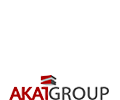Payment for the designs
In our practice, we use the principle of payment for the graphical designs, the value of which is compensated during implementation of the advertisement. Polish law protects authors of the designs with copyright protection act. Here is an example of appropriation of the design described by the website prawne.pl
Competitive company used our visualizations. These visualizations were made by our employ and were used by the competitive company without any changes. What steps should we undertake?
Solution of the problem
In accordance with the content of art 1 of the copyright and related rights act, the subject of copyright shall be any manifestation of creative activity of individual character, established in any form, regardless of the value, purpose and method of expression (piece of work). In particular, the subject of copyright includes the following pieces of works:
1) expressed in words, mathematical symbols, graphic signs (literary, publishing, scientific, cartographic and computer programs);
2) plastic;
3) photographic;
4) luthiery;
5) industrial design;
6) architectural, architectural-urban and urban;
7) musical and verbal-musical;
8) theatrical, theatrical-musical, choreographic and pantomime;
9) audiovisual (including film).
It should be emphasized that the protection can cover only the manner of expression. Discoveries, notions, procedures, methods, principles of operation and mathematical conceptions are not covered by the protection. The piece of work is a subject of the copyright law from the moment of establishment, even if it has uncompleted form. The author is entitled to protection regardless of fulfilling any formalities.
If the visualisation performed by specific entity meets the requirements for recognizing it as a piece of work, within the meaning of 1 copyright and related rights act, then its creator shall be entitled to protection resulting from the provisions of this act.
In accordance with the content of art. 78 of the copyright and related rights act, the author whose moral rights have been endangered by actions of others, can request the cessation of such actions. In the case of carried out infringement, the author may demand from the person who committed the infringement to perform actions necessary to remove its effects, particularly to submit public statement of appropriate content and form. If the infringement was culpable, then the court may award an appropriate amount of money to the author as compensation for the suffered damage or – at the author’s request – to oblige the perpetrator to pay an appropriate amount of money to social purpose specified by the author.
According to art. 79, paragraph 1 of this act, the entitled persons, whose proprietary copyrights have been infringed, may demand from the person who infringed these rights:
1) to discontinue the infringement;
2) to remove the effects of infringement;
3) to repair the caused damage:
a) on general principles or
b) by payment of a sum of money in the amount
corresponding to twice the amount of appropriate remuneration, and if the infringement is culpable – 3x the amount of appropriate remuneration, which at the moment of its claiming would be payable in regard to granting the consent for using of the piece of work by the authorized persons;
4) return of achieved benefits.
Independently of the claims referred to above, the authorized person may demand:
1) one-time or multiple publishing of the statements with appropriate content and in appropriate form in the press or making public a part or entirety of court’s ruling issued in regard to this case, in the manner and in the scope determined by the court;
2) paying of appropriate sum of money by the person who infringed the proprietary copyrights, not lower than twice the amount of probable benefits gained by person that committed the infringement, to the Fund referred to in art. 111, if the infringement is culpable and was performed in the scope of business activity carried out in the name of third party or his/her own name, even on someone else’s account.
The court may order the person who infringed the proprietary copyrights, at his/her request and with consent of the authorized person, if the infringement is not culpable, to pay an appropriate sum of money to the authorized person, if the discontinuation of infringement or removal of effects of the infringement would be disproportionately severe for the infringing person.
The court, while ruling on infringement of the law, may rule at the authorized person’s request on the unlawfully manufactured items and resources and material used for their manufacture, particularly it may order to withdraw them from the market, to grant them to the authorized person as part of due compensation or to destroy them. While ruling on this, the court takes into account the seriousness of infringement and the interests of third persons.

![[SEO]Tytuł Strony](/img/xlogo.png.pagespeed.ic.ThQ7pRc9eR.png)



